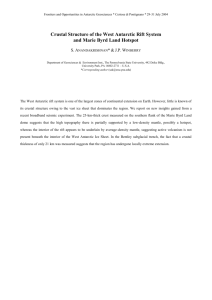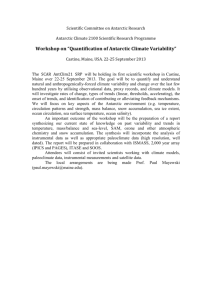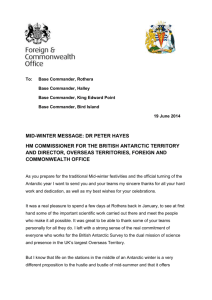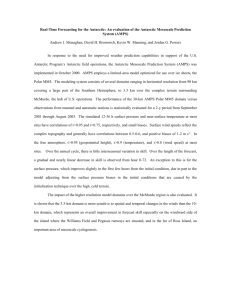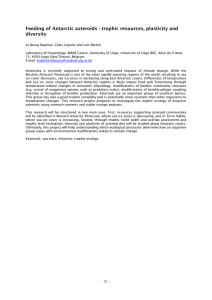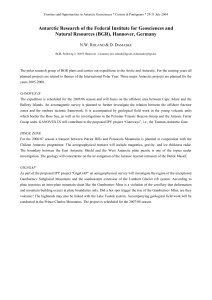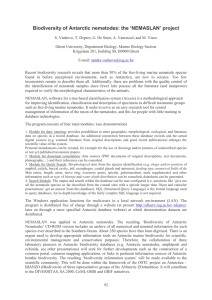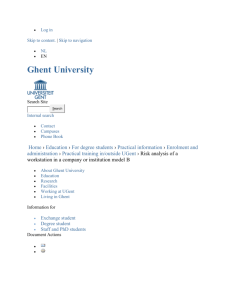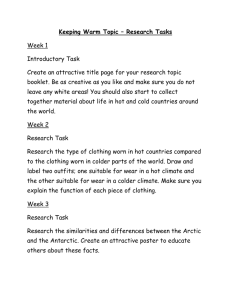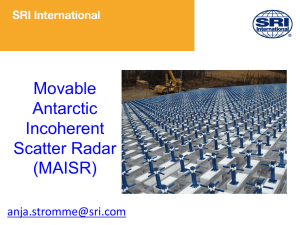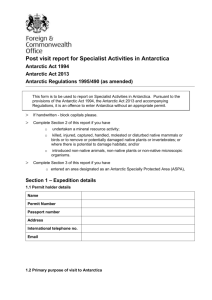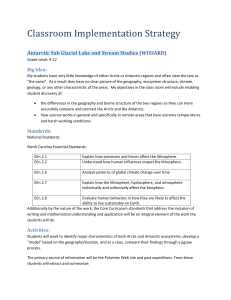Human impacts on Antarctic ecosystems : do not forget the
advertisement
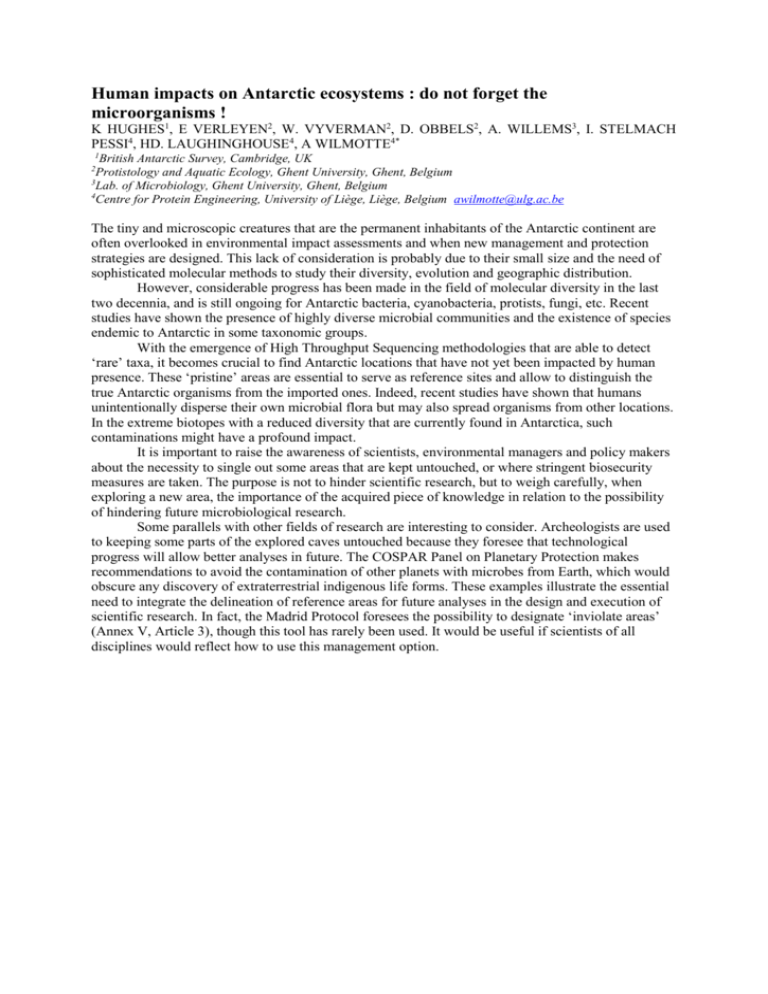
Human impacts on Antarctic ecosystems : do not forget the microorganisms ! K HUGHES1, E VERLEYEN2, W. VYVERMAN2, D. OBBELS2, A. WILLEMS3, I. STELMACH PESSI4, HD. LAUGHINGHOUSE4, A WILMOTTE4* 1 British Antarctic Survey, Cambridge, UK Protistology and Aquatic Ecology, Ghent University, Ghent, Belgium 3 Lab. of Microbiology, Ghent University, Ghent, Belgium 4 Centre for Protein Engineering, University of Liège, Liège, Belgium awilmotte@ulg.ac.be 2 The tiny and microscopic creatures that are the permanent inhabitants of the Antarctic continent are often overlooked in environmental impact assessments and when new management and protection strategies are designed. This lack of consideration is probably due to their small size and the need of sophisticated molecular methods to study their diversity, evolution and geographic distribution. However, considerable progress has been made in the field of molecular diversity in the last two decennia, and is still ongoing for Antarctic bacteria, cyanobacteria, protists, fungi, etc. Recent studies have shown the presence of highly diverse microbial communities and the existence of species endemic to Antarctic in some taxonomic groups. With the emergence of High Throughput Sequencing methodologies that are able to detect ‘rare’ taxa, it becomes crucial to find Antarctic locations that have not yet been impacted by human presence. These ‘pristine’ areas are essential to serve as reference sites and allow to distinguish the true Antarctic organisms from the imported ones. Indeed, recent studies have shown that humans unintentionally disperse their own microbial flora but may also spread organisms from other locations. In the extreme biotopes with a reduced diversity that are currently found in Antarctica, such contaminations might have a profound impact. It is important to raise the awareness of scientists, environmental managers and policy makers about the necessity to single out some areas that are kept untouched, or where stringent biosecurity measures are taken. The purpose is not to hinder scientific research, but to weigh carefully, when exploring a new area, the importance of the acquired piece of knowledge in relation to the possibility of hindering future microbiological research. Some parallels with other fields of research are interesting to consider. Archeologists are used to keeping some parts of the explored caves untouched because they foresee that technological progress will allow better analyses in future. The COSPAR Panel on Planetary Protection makes recommendations to avoid the contamination of other planets with microbes from Earth, which would obscure any discovery of extraterrestrial indigenous life forms. These examples illustrate the essential need to integrate the delineation of reference areas for future analyses in the design and execution of scientific research. In fact, the Madrid Protocol foresees the possibility to designate ‘inviolate areas’ (Annex V, Article 3), though this tool has rarely been used. It would be useful if scientists of all disciplines would reflect how to use this management option.
